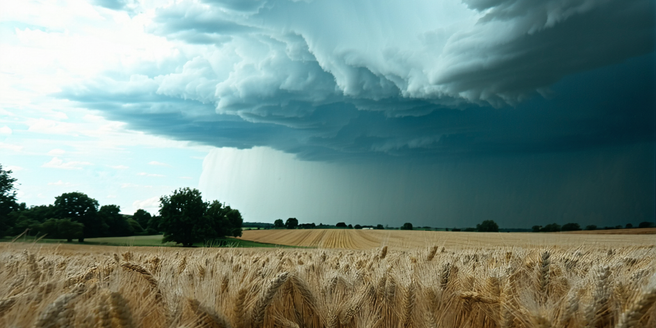
Understanding Weather Fronts and Their Formation
Weather fronts are boundaries separating air masses of different densities and temperatures, creating a distinct zone of weather activities. These fronts form due to variances in atmospheric pressure, wind patterns, and the Earth’s rotation. As air masses with unique properties collide, they cause a change in weather conditions, such as temperature shifts, wind variations, and precipitation. The meeting line, or front, can be warm, cold, stationary, or occluded, each leading to specific weather patterns. Understanding the nature of these fronts is crucial for meteorologists to predict weather changes and patterns accurately. The behavior and movement of these weather fronts are influenced by factors like geography and topography. By studying these fronts, scientists can better comprehend how they impact local climates and contribute to broader weather phenomena.
Cold Fronts: Characteristics and Impact on Weather
Cold fronts occur when a mass of colder air moves towards and undercuts a warmer air mass, lifting it. This process creates a distinct boundary that can dramatically influence weather conditions. The arrival of a cold front results in a temperature drop, wind shifts, and often intense weather phenomena such as thunderstorms, heavy rain, or even hail. Cold fronts are typically fast-moving and are associated with significant weather changes over a short period. As they pass, skies clear, and temperatures drop, creating cooler and drier conditions. The intensity of the weather changes depends on factors like the temperature contrast between the air masses and the speed of the cold front. Understanding cold fronts and their characteristics is essential for weather forecasting, particularly in predicting severe weather events that may pose risks to safety.
Warm Fronts: Signs and Weather Changes They Bring
Warm fronts form when a warm air mass slides over a cold air mass, gradually replacing it. This type of front is characterized by a gentle slope and extended cloudiness, which often brings steady, light precipitation like rain or snow. As the warm air ascends over the cooler air, it cools and condenses, forming a wide band of cloud cover. This process typically precedes the passage of the front, causing an increase in temperature and a shift in wind direction. Warm fronts move slower than cold fronts, which can prolong weather changes across an area. The changes are generally less abrupt than those associated with cold fronts. Recognizing and predicting warm fronts is key for understanding upcoming weather conditions, as they often signal more stable and less severe weather patterns compared to their cold counterparts.
Stationary Fronts: Prolonged Weather Effects
Stationary fronts occur when the boundary between two air masses is relatively still, with neither mass advancing significantly. This stagnation often results in prolonged periods of cloudiness, precipitation, and overcast skies over the same region. The weather can persist for several days, with rain or snow being continuous, which can lead to significant accumulation and potential flooding or other issues. Because stationary fronts do not move quickly, they can bring extended periods of soggy conditions, which might impact daily activities and local agriculture. Understanding the dynamics of stationary fronts is crucial for predicting such prolonged weather scenarios and mitigating potential negative impacts. These fronts serve as critical indicators of weather stability or changes, depending on whether they begin to move as either a warm or cold front, bringing shifts in weather patterns.
Occluded Fronts: Complex Interactions in the Atmosphere
Occluded fronts form during the life cycle of an extratropical cyclone when a cold front overtakes a warm front. This results in the mixing of different air masses, leading to complex atmospheric interactions. Occluded fronts are typically represented by a combination of warm and cold characteristics, which can create varied weather events, such as intense rain, wind, and thunderstorms. The occlusion process signals the mature stage of a cyclone and indicates an eventual weakening as the temperature contrast diminishes. The complexity of occluded fronts arises from the stacking of several different air layers, which meteorologists study to understand the behavior and evolution of cyclones. Effective prediction and analysis of occluded fronts are essential for weather forecasting, especially in regions where these systems are prevalent and have significant climatological impacts.
How Weather Fronts Affect Global Climate Patterns
Weather fronts play a crucial role in shaping global climate patterns. By influencing local weather conditions, fronts contribute to the broader climate system. For instance, cold fronts can lead to cooler temperatures and diminished humidity, impacting regional climates over time. Warm fronts, on the other hand, can result in higher temperatures and increased moisture levels, affecting ecosystems and agriculture. The continuous movement and interaction of fronts contribute to the distribution of heat and moisture across the globe, affecting everything from ocean currents to wind patterns. Understanding how weather fronts operate within the larger climate system is vital for accurately modeling climate change scenarios. This knowledge helps scientists predict shifts in climate trends and make informed decisions about how to mitigate or adapt to these changes, emphasizing the interconnectedness of local and global climate dynamics.
